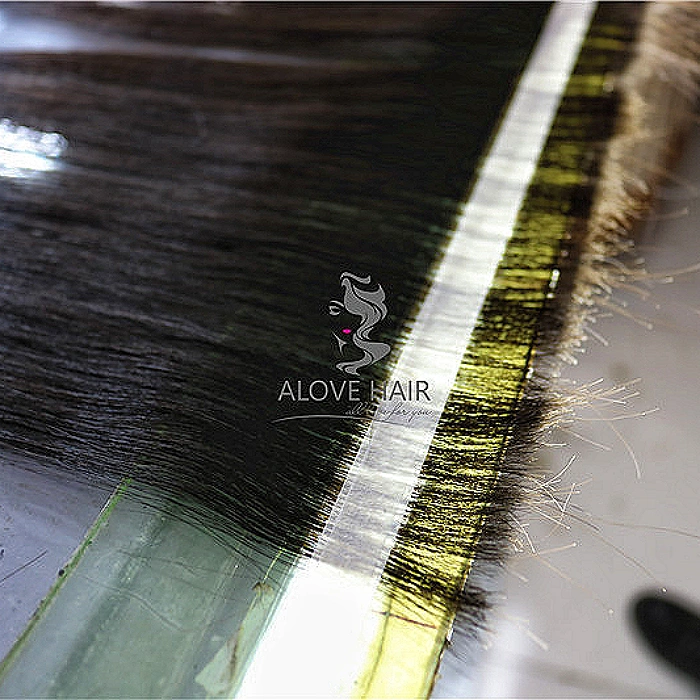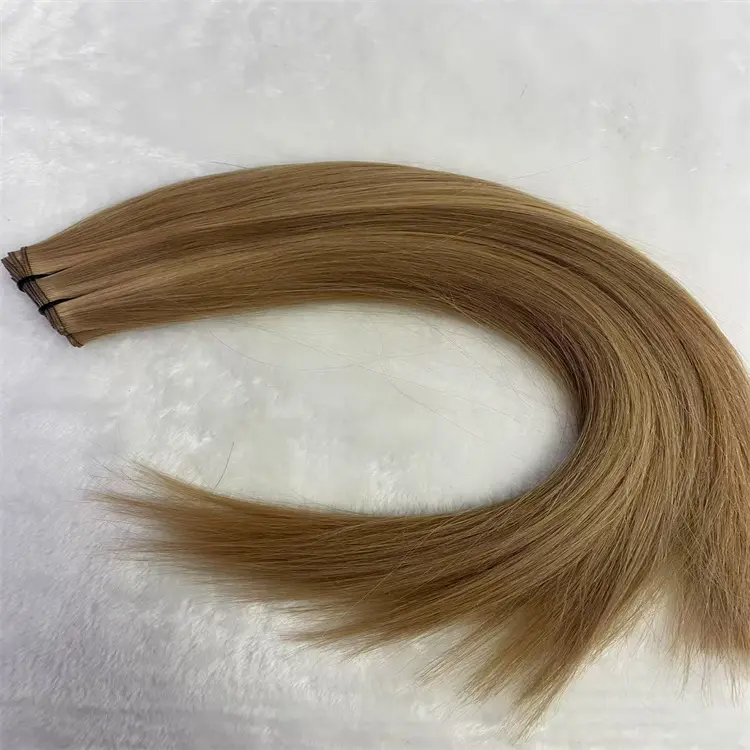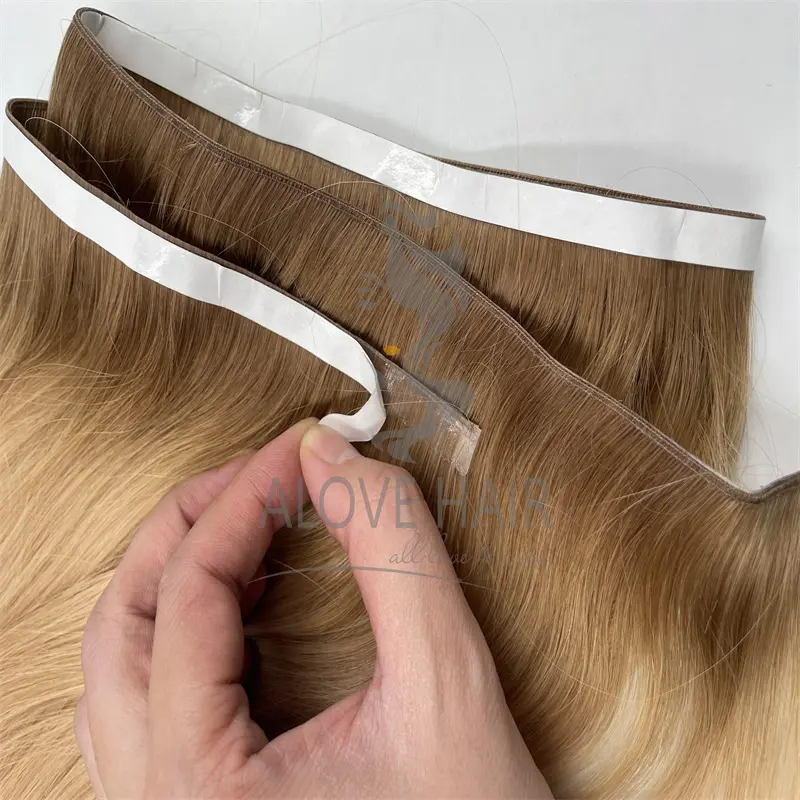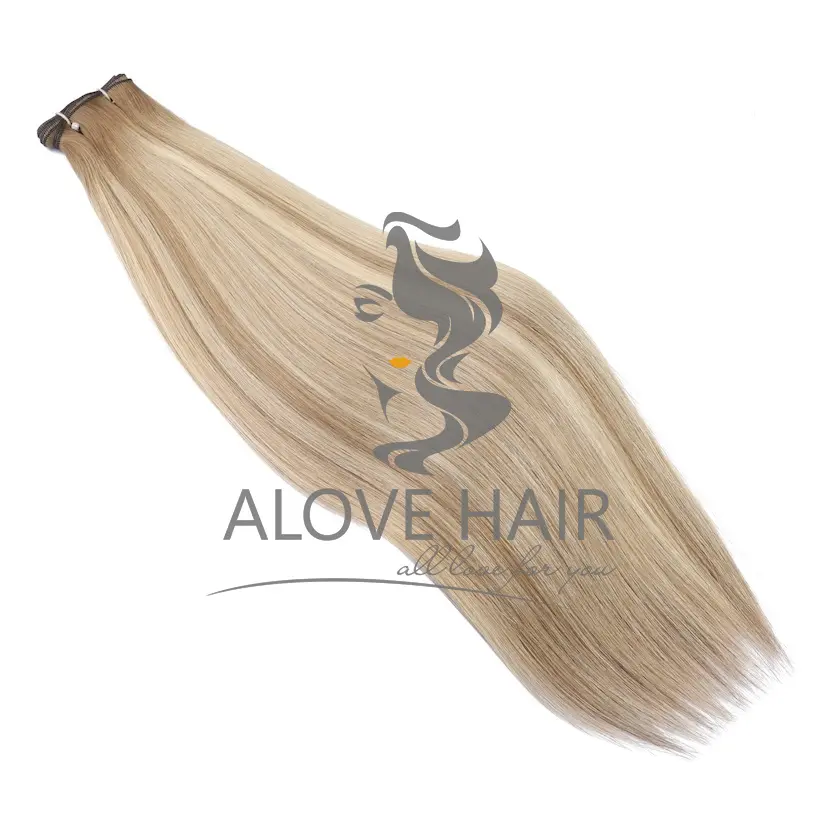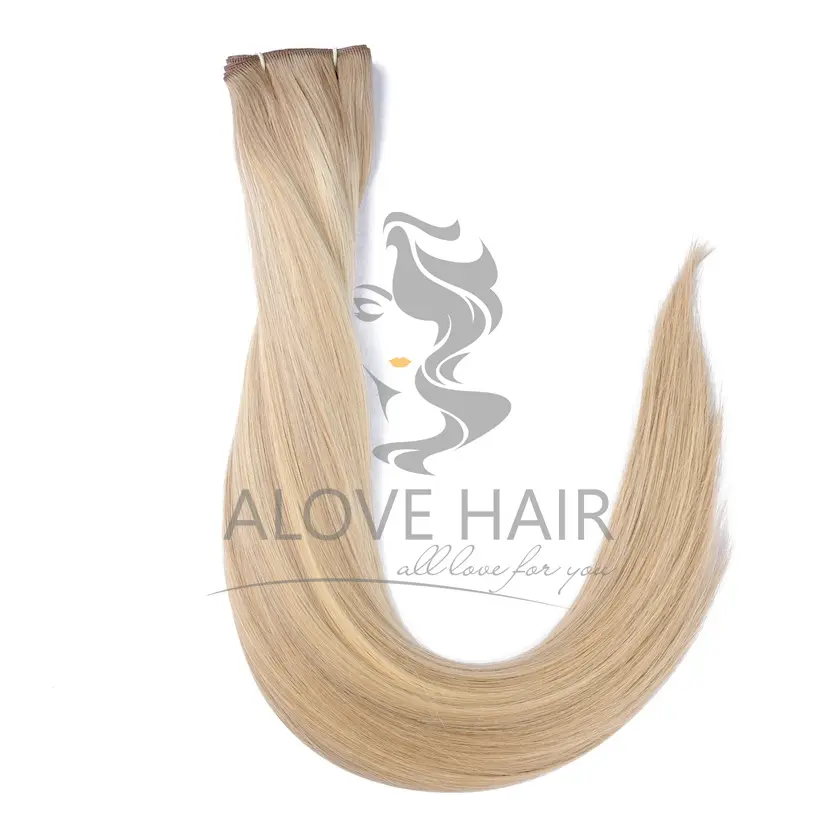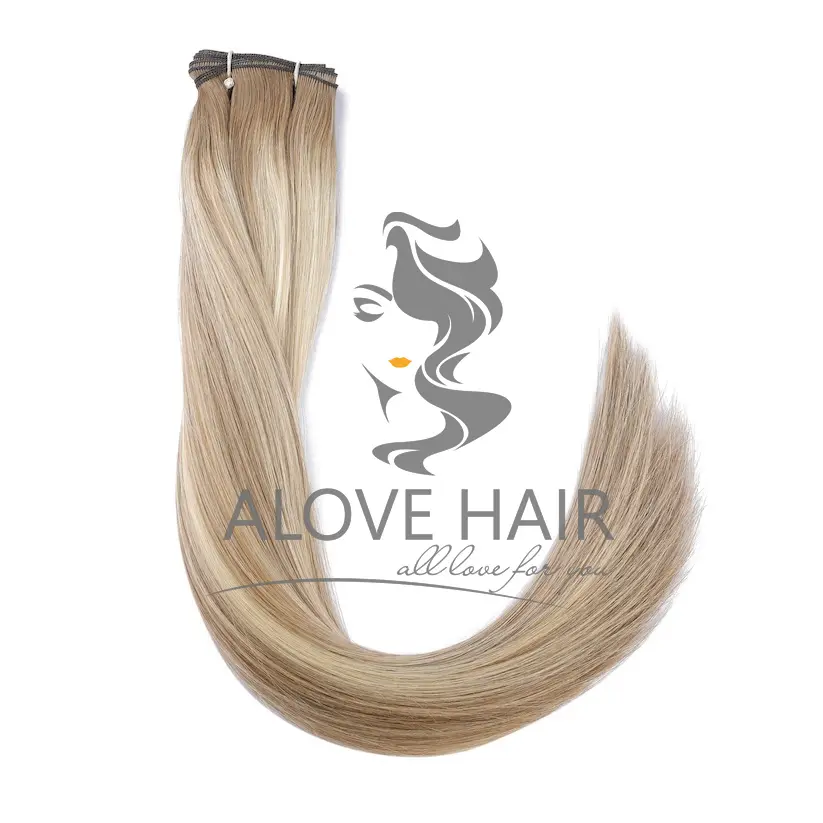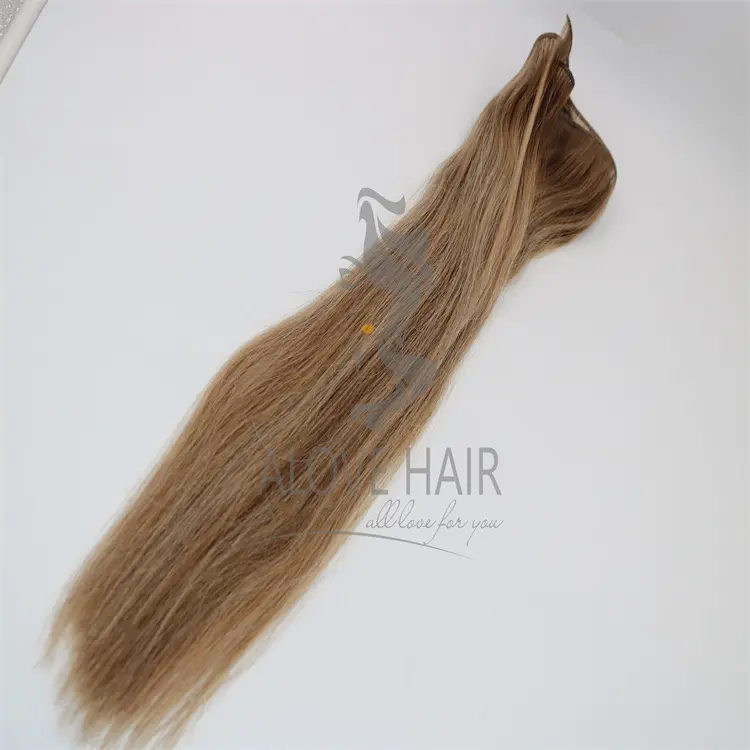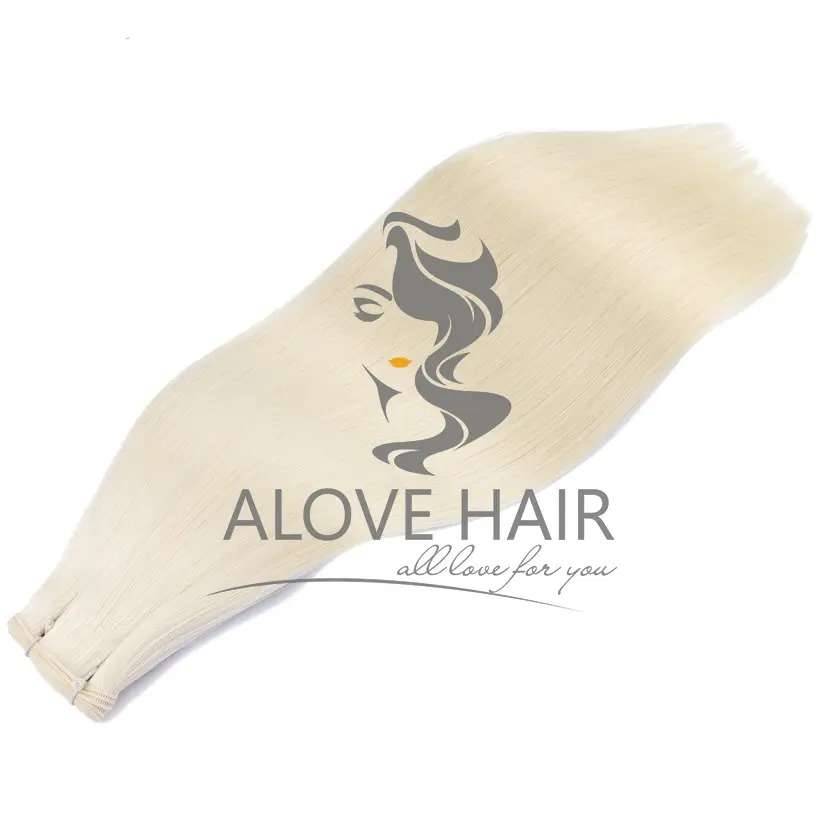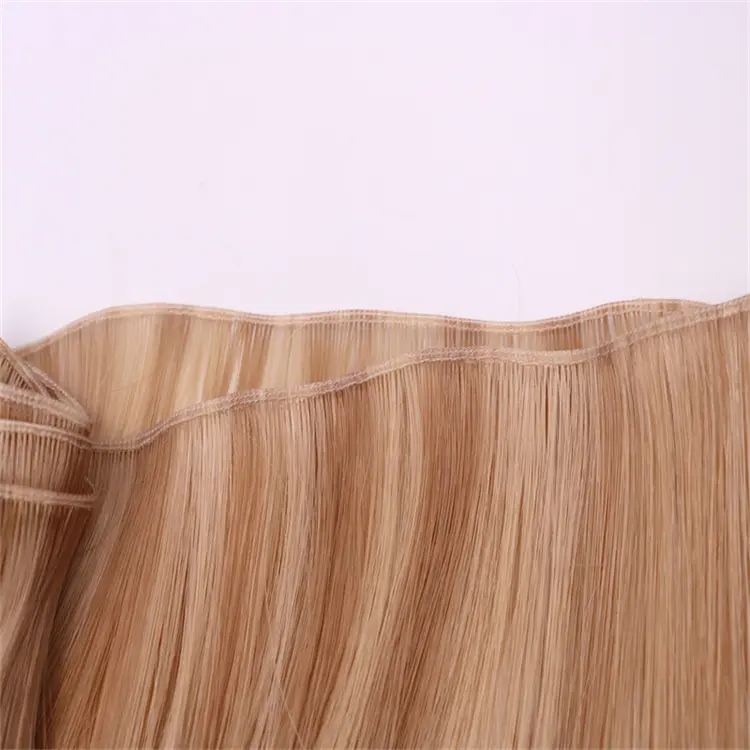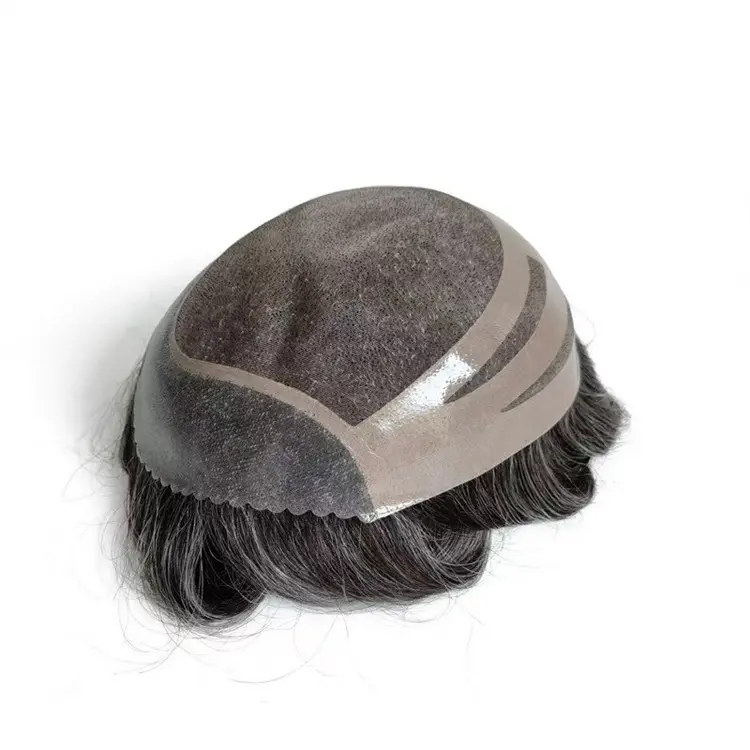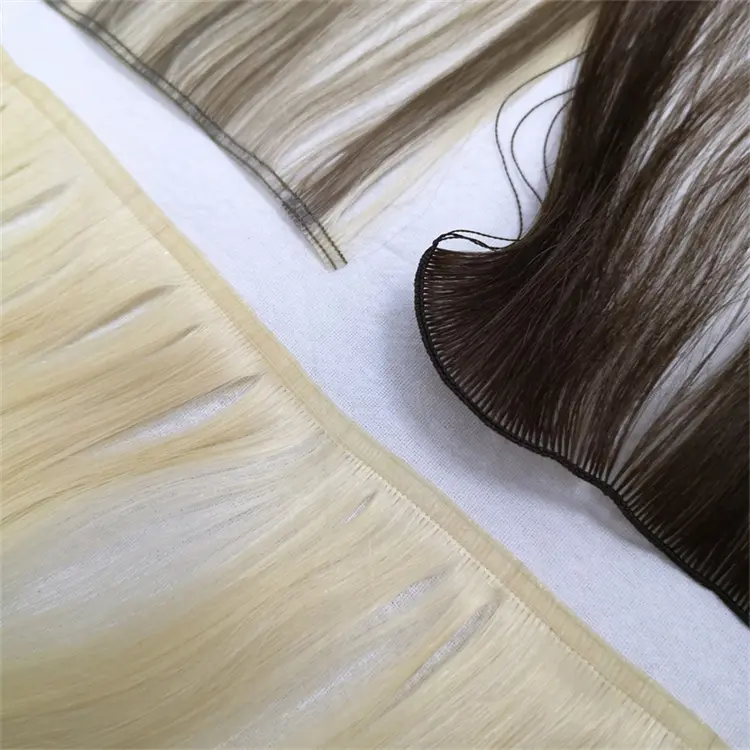Abstract
This article provides a thorough exploration of the lifespan of K-tip hair extensions (also known as keratin hair extensions) and the factors that influence it. As a semi-permanent hair extension technique, K-tip extensions typically last 3-6 months, though their actual duration depends on various factors. The article analyzes key factors such as extension quality, installation technique, daily care habits, individual hair characteristics, and lifestyle, offering professional maintenance advice and practical tips to extend their lifespan. Additionally, it compares the longevity of K-tip extensions with other popular hair extension methods, providing readers with a reference for choosing the most suitable option.
Keywords: K-tip extensions, keratin hair extensions, extension lifespan, extension maintenance, hair lengthening
Introduction
In today's beauty trends, where versatile hairstyles are highly sought after, hair extension technology has gained immense popularity for its ability to quickly transform hair length and volume. Among the various extension methods, K-tip extensions (also known as keratin or fusion extensions) stand out for their natural appearance and relatively long lifespan. This technique uses heat to fuse small strands of keratin-bonded extensions with natural hair, creating a seamless blend. It has become the preferred choice for many seeking a semi-permanent hairstyle solution.
The lifespan of K-tip extensions is one of the most common concerns for potential users. Compared to traditional braided or glue-in extensions, K-tip extensions typically promise a longer duration, though the actual lifespan varies from person to person. Understanding the factors that influence the longevity of K-tip extensions and mastering proper care techniques not only maximizes the value of the investment but also protects the health of natural hair. This article delves into the average lifespan of K-tip extensions, influencing factors, maintenance secrets, and comparisons with other extension methods, offering readers a comprehensive guide.
1. Basic Concepts and Technical Principles of K-tip Extensions
K-tip extensions, also known as keratin or fusion extensions, are a semi-permanent hair extension method that bonds artificial hair strands to natural hair using high-temperature fusion technology. The core of this technique lies in the use of small extension units containing keratin, each with a tiny keratin "stick" at the end. A professional stylist uses a specialized heating tool to melt these keratin sticks, which are then immediately fused with a small section of the client's natural hair. Once cooled, the bond becomes secure.
Compared to traditional extension methods, K-tip extensions offer several notable advantages. First, the bonding points are extremely small (typically the size of a matchstick head), making the extensions virtually undetectable for a natural look. Second, keratin is biocompatible with hair, reducing the risk of allergic reactions. Most importantly, the bonding method exerts minimal tension on natural hair, lowering the risk of damage to the hair follicles during the extension process.
From a technical perspective, installing K-tip extensions requires considerable skill. The stylist must precisely control the heating temperature (usually between 180-220°C) to ensure the keratin melts sufficiently without overheating and damaging the hair. Additionally, the weight and placement of each extension must be carefully calculated to maintain the hair's natural fall and comfort. A full K-tip extension service typically takes 2-4 hours, depending on the number of extensions and the desired volume.
2. Average Lifespan of K-tip Extensions and Influencing Factors
The average lifespan of K-tip extensions is typically 3-6 months, though this range is influenced by various factors. Understanding these factors helps users set realistic expectations and take measures to extend their extensions' longevity. The quality of the extensions themselves is a foundational factor. High-quality K-tip extensions made from 100% human hair not only look more natural but are also more durable than synthetic or blended hair, withstanding frequent styling and maintenance.
Installation technique significantly impacts the extensions' lifespan. When installed correctly by an experienced professional, K-tip extensions can last 30-50% longer than those installed by amateurs. Professional installation ensures each keratin bond is evenly fused and properly distributed, preventing excessive tension on specific areas of the hair. Improper installation, on the other hand, can lead to premature loosening or damage to natural hair.
Individual hair characteristics also play a key role in determining extension lifespan. Generally, thick, healthy hair can better support extensions and maintain them for longer. Those with fine, damaged, or oily hair may find that extensions last a shorter time. Hair growth rate is another important factor—faster-growing hair will "push" the extension bonds away from the scalp more quickly, causing them to loosen.
Daily care habits are perhaps the most critical variable affecting the lifespan of K-tip extensions. Proper washing, conditioning, and styling methods can significantly extend their longevity, while improper care can halve it. Using professional extension-friendly products, avoiding excessive heat tools, and adopting correct brushing techniques are all essential for prolonging extension life.
Lifestyle factors are equally important. Frequent swimming (especially in chlorinated pools or seawater), vigorous exercise leading to heavy sweating, frequent color changes, or the use of harsh chemical products can accelerate wear and tear. Sleeping habits also matter—using a silk pillowcase and loosely tying hair before bed can reduce friction-induced damage.
3. Professional Maintenance Tips and Techniques to Extend Lifespan
To keep K-tip extensions in optimal condition and extend their lifespan, establishing a scientific care routine is essential. When washing hair, adopt a gentle cleansing approach. It is recommended to wash hair 2-3 times a week using a sulfate-free shampoo designed for extensions. Water should be warm but not scalding, and instead of rubbing or circular motions, gently press the scalp and let the lather flow naturally through the extensions. Conditioner should only be applied to the ends, avoiding the bonds to prevent softening the keratin adhesive.
Brushing extensions requires special techniques and tools. Avoid brushing for the first three days after installation to allow the keratin bonds to fully set. Afterward, use a loop brush or wide-tooth comb designed for extensions, starting from the ends and working upward slowly. If resistance is encountered, do not force it. Brushing 2-3 times daily prevents tangles, but excessive brushing should be avoided to minimize unnecessary pulling. Before bed, braid hair loosely or use a silk hair cap to reduce nighttime friction.
Temperature control during styling is critical for extending extension life. When using heat tools, keep the temperature below 150°C and always apply a heat protectant. When blow-drying, maintain a distance of at least 15 cm and avoid concentrating heat on one bond for too long. Limit the use of flat irons or curling wands to 2-3 times weekly, as high temperatures gradually degrade the keratin bonds.
Professional maintenance is indispensable for prolonging the lifespan of K-tip extensions. It is recommended to return to the salon every 4-6 weeks for adjustments. The stylist will check the extensions' condition, re-secure loose bonds, and trim split ends. This regular upkeep not only extends the overall lifespan but also keeps the hairstyle looking fresh. When extensions appear dry or lose shine, professional deep conditioning treatments can restore their vitality.
Avoiding certain behaviors is equally important. Before swimming, use a waterproof cap or apply conditioner to wet hair as a protective barrier, rinsing with fresh water immediately afterward. Avoid styling products containing alcohol or oil, as these ingredients can break down the keratin bonds over time. When tying hair, use soft coil hair ties and avoid tight ponytails that concentrate pressure on the bonds. For activities that may snag hair (such as certain sports), secure hair in a loose updo.
4. Comparing K-tip Extensions with Other Hair Extension Methods
Among various hair extension techniques, K-tip extensions are renowned for their balanced lifespan and natural appearance, though each method has its pros and cons. Traditional braided extensions (like cornrow extensions) typically last 4-8 weeks. While the initial installation cost is lower, they require more frequent salon maintenance, which may not be cost-effective long-term. The constant tension on the scalp can also cause discomfort or even hair loss, especially for those with thinner hair.
Glue-in extensions use special adhesive to attach wefts to natural hair, with an average lifespan of 6-8 weeks. Although installation is quicker (about 1-2 hours), glue-in extensions are prone to loosening in high heat or humidity, and removal can be complicated, potentially leaving residue that damages natural hair. In contrast, K-tip extensions perform better in heat and moisture resistance, and removal is gentler.
Micro-ring extensions (also called micro-link extensions) use small metal rings to attach extensions to natural hair, lasting 2-3 months on average. These extensions are reusable, and installation and adjustments are relatively simple. However, the metal rings may be visible, affecting the natural look, and can snag during brushing. K-tip extensions, on the other hand, have completely concealed bonds and offer a brushing experience closer to natural hair.
Tape-in extensions, which have grown in popularity recently, use pre-taped wefts adhered to natural hair and last about 4-6 weeks. Although installation is quick (around 1 hour) and initially provides voluminous results, tape-in extensions can absorb water and swell during washing, causing discomfort and visible weft lines. K-tip extensions blend seamlessly with natural hair, remaining undetectable even in high ponytails.
Among high-end extension options, K-tip extensions are most similar to U-tip extensions (also called I-tip extensions), which also use keratin technology. Both have comparable lifespans, though U-tip bonds are slightly larger and require more installation time. Nano-ring extensions are another semi-permanent option, using smaller nano-silicone rings for attachment and theoretically lasting up to 6 months. However, they are significantly more expensive than K-tip extensions and require highly skilled installation.
5. Identifying Replacement Timing and Health Considerations
Recognizing when K-tip extensions need replacement is crucial for maintaining hair health. The most obvious sign is noticeable loosening or sliding of the bonds—normally, bonds should stay about 1-2 cm from the scalp. If most bonds have shifted 3 cm or more, the extensions are nearing the end of their lifespan. Another clear indicator is increased tangling, particularly near the bonds, suggesting the keratin fusion is deteriorating.
Changes in hair appearance also signal replacement time. When extensions become dry, dull, and unresponsive to deep conditioning, the artificial hair has likely aged excessively. Visible root growth (usually 1.5-2 cm or more) can also affect aesthetics, warranting a complete replacement or "move-up" adjustment. If scalp itching, redness, or unusual hair loss occurs, consult a professional stylist immediately, as this may indicate excessive tension from the extensions.
From a health perspective, even without obvious issues, K-tip extensions should not be worn continuously for more than 6 months. Long-term use of the same set can cause natural hair to break at the bond points, especially if the weight distribution is uneven. Professionals recommend removing extensions every 6 months, allowing natural hair a 2-4 week "rest period" with intensive conditioning before considering a new set.
Removing K-tip extensions must be done by a professional using specialized keratin dissolvers to avoid damaging natural hair during self-removal. The process typically takes 1-2 hours, followed by a thorough scalp and hair repair treatment. Experience shows that with professional removal and proper care, most people's natural hair fully recovers within 2-3 months, preparing it for the next extension application.
6. Conclusion
K-tip extensions, as a high-quality semi-permanent hair solution, offer an average lifespan of 3-6 months, which can be extended further with proper care and professional maintenance. By selecting high-quality materials, opting for professional installation, establishing a scientific daily care routine, and scheduling regular salon visits, users can maximize the value of their investment while protecting natural hair health. Compared to other extension methods, K-tip extensions strike an excellent balance between natural appearance, comfort, and longevity, making them ideal for modern urbanites seeking long-term hairstyle solutions.
Understanding the right time for replacement and proper removal methods is equally vital for maintaining long-term hair beauty. As extension technology continues to advance and care products innovate, the performance and lifespan of K-tip extensions are expected to improve further, offering consumers an even more perfect hair experience. For those considering extensions, consulting a professional stylist is recommended to choose the most suitable type and care plan based on individual hair characteristics, lifestyle, and desired results.

